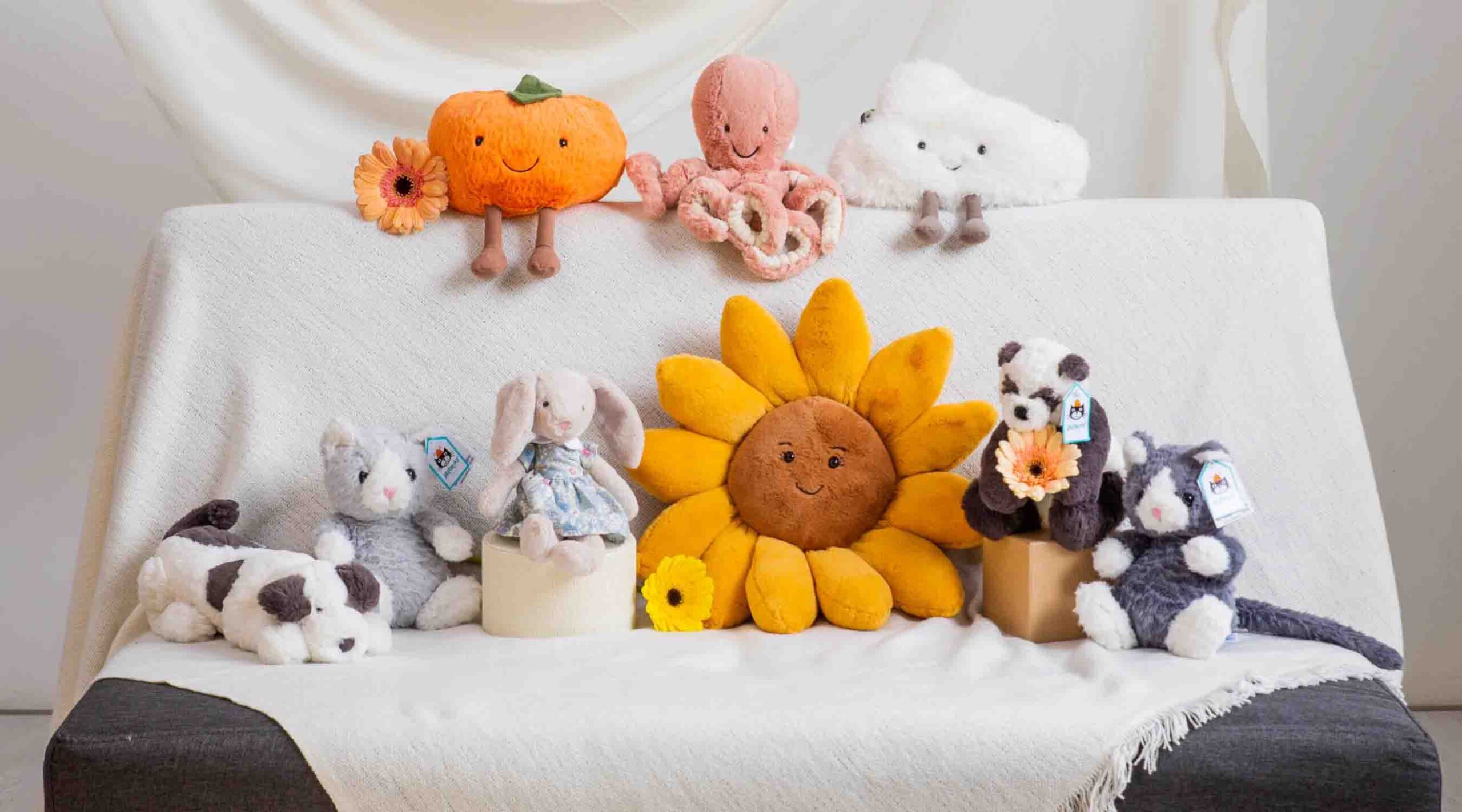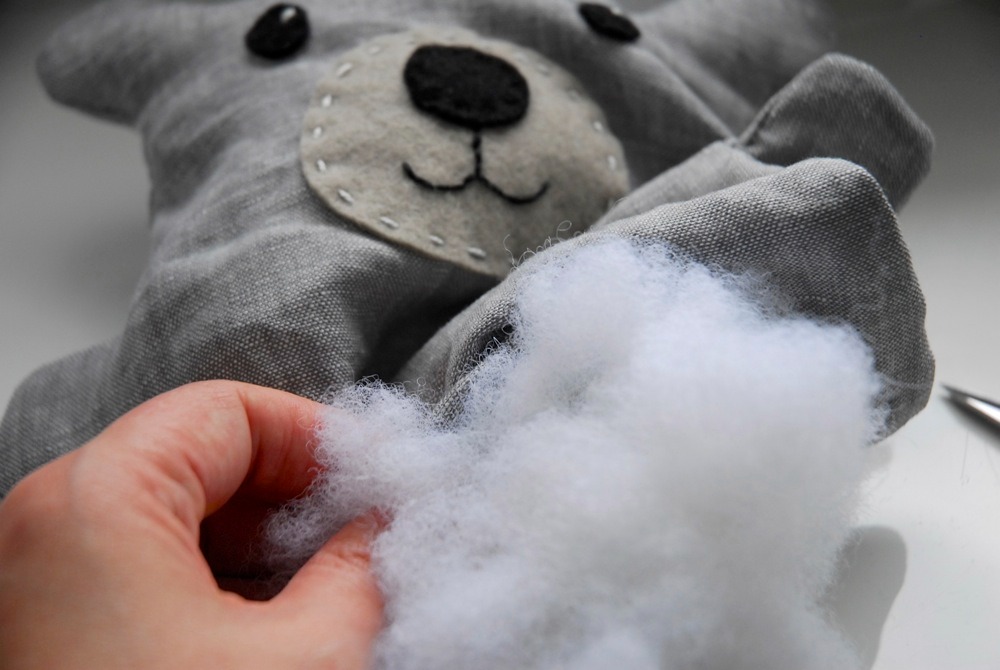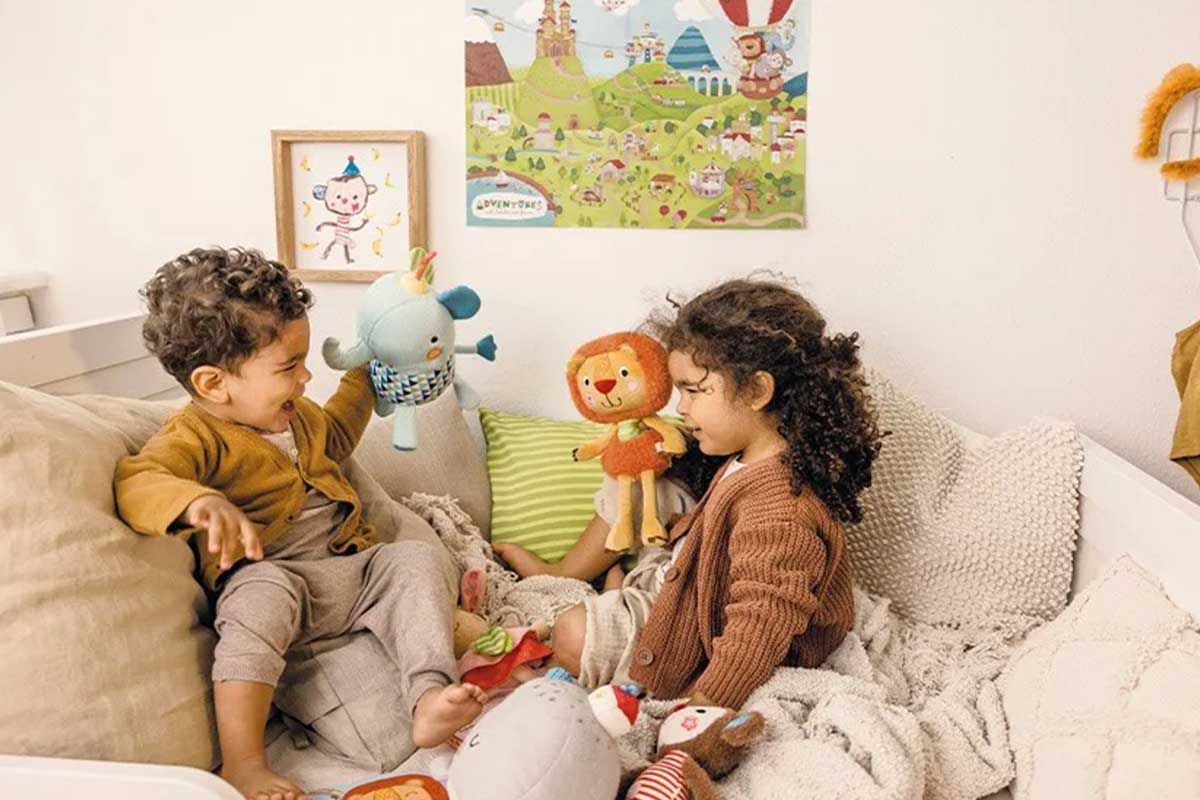Soft toys are cherished across all age groups. From cuddly teddy bears to stylish plush dolls, the materials used in their construction define comfort, durability, and market value. For manufacturers and buyers alike, understanding these materials is crucial—not only for ensuring product quality but also for meeting safety standards and consumer preferences.
This guide explores the main materials used in plush toy manufacturing, including natural fabrics, synthetic fibers, stuffing choices, and eco-friendly alternatives. We’ll also look at how these choices influence customization, production efficiency, and compliance with international certifications.
What natural fabrics are commonly used in plush toy manufacturing?

Natural fabrics bring a premium, eco-friendly appeal to plush toys. They are often favored by boutique brands, eco-conscious consumers, and specialty retailers.
Cotton and Organic Cotton
Cotton is one of the most common natural fabrics for plush toys. It is soft, breathable, and safe for children. Organic cotton offers the added advantage of being chemical-free, appealing to European and North American buyers focused on sustainability.
Wool and Cashmere Blends
Wool, including cashmere blends, is used in higher-end toys. It gives a warm, cozy feel and enhances perceived value. However, wool requires careful handling in production and may not be suitable for all markets due to cost.
Linen and Bamboo Fabrics
Linen and bamboo-based fabrics are increasingly used for plush dolls or eco-friendly collections. Linen is durable and sustainable, while bamboo is naturally hypoallergenic and soft, making it suitable for sensitive users.
| Natural Fabric | Softness | Durability | Eco-Friendly | Common Market |
|---|---|---|---|---|
| Cotton | High | Medium | Medium | Children’s plush |
| Organic Cotton | High | Medium | High | Eco-focused buyers |
| Wool/ Cashmere | Medium | High | Low-Medium | Premium plush |
| Linen | Medium | High | High | Boutique brands |
| Bamboo Fabric | High | Medium | High | Eco-conscious markets |
How do synthetic fibers compare in softness, durability, and cost?

Synthetic fibers dominate large-scale plush toy production due to their versatility, affordability, and consistency. They also provide superior softness compared to many natural fabrics.
Polyester Plush Fabric
The industry standard, polyester plush (minky, velboa, fleece) is soft, durable, and cost-effective. It is highly versatile, available in a wide range of textures and colors, making it ideal for both mass-market and customized plush toys.
Acrylic and Nylon Fibers
These are often blended with polyester to improve strength and create different surface finishes. Acrylic fibers can mimic the look of natural wool, while nylon improves resilience in high-use plush toys.
Cost and Manufacturing Benefits
Synthetic fabrics are cheaper to source, easier to dye, and simpler to sew in automated production lines. They also resist shrinking and wrinkling, which reduces production issues.
| Synthetic Fiber | Softness | Durability | Cost Efficiency | Typical Application |
|---|---|---|---|---|
| Polyester | High | High | High | All plush categories |
| Acrylic | Medium | Medium | Medium | Faux wool plush |
| Nylon | Medium | High | High | Durable plush |
| Blends | Variable | High | Medium-High | Specialized plush |
What role do stuffing materials play in the feel and longevity of soft toys?

The outer fabric determines appearance, but stuffing materials define comfort, huggability, and long-term durability.
Polyester Fiberfill
The most common stuffing, polyester fiberfill, is lightweight, hypoallergenic, and affordable. It retains its softness even after repeated use and is easy to comply with CE/ASTM standards.
Foam and Shredded Foam
Foam adds resilience and structure. Shredded memory foam is used in premium plush toys because it retains shape longer, offering a higher-end experience.
Microbeads and Pellets
Microbeads and pellets provide a unique texture and weight. They are used in sensory plush or therapeutic toys but require careful stitching to avoid leakage.
Cotton and Eco-Friendly Fillings
Cotton stuffing or recycled polyester (rPET) fillings are increasingly requested by eco-conscious markets. They support sustainability branding while maintaining safe quality.
| Stuffing Material | Softness | Durability | Eco-Friendly | Best For |
|---|---|---|---|---|
| Polyester Fiberfill | High | Medium | Moderate | Mass-market plush |
| Memory Foam | Medium | High | Low | Premium plush |
| Microbeads/ Pellets | Variable | High | Low | Sensory toys |
| Cotton Stuffing | Medium | Medium | High | Eco lines |
| Recycled Polyester | High | Medium | High | Sustainable plush |
Which safety and certification standards regulate materials in plush toys?

Plush toys are subject to strict regulations across global markets. Buyers must ensure materials are non-toxic, durable, and compliant with international safety standards.
Key Certifications
- ASTM F963 (USA) – Toy safety standard, covering mechanical hazards and toxicology.
- CPSIA (USA) – Ensures compliance with chemical limits, including lead and phthalates.
- EN71 (Europe) – Covers flammability, small parts, and chemical safety.
- ISO 8124 (Global) – Internationally recognized toy testing standard.
Manufacturer Responsibilities
Factories must use certified fabrics and fillings, conduct seam-strength tests, and verify compliance through third-party testing. Any deviation risks shipment rejections or product recalls, which can be costly for buyers.
| Standard | Region | Focus Areas |
|---|---|---|
| ASTM F963 | USA | Mechanical & toxicology safety |
| CPSIA | USA | Lead, phthalates, labeling |
| EN71 | Europe | Flammability, chemicals, small parts |
| ISO 8124 | Global | International toy safety compliance |
How do material choices impact customization and large-scale production efficiency?

Material selection not only impacts toy feel and quality but also determines how efficiently a factory can scale production.
Customization Advantages
- Polyester fabrics are highly adaptable for colors, textures, and embroidery, making them the top choice for ODM and OEM customization.
- Natural fabrics appeal to niche markets but are harder to dye and customize at scale.
Production Efficiency
- Synthetic fibers allow for faster cutting, sewing, and automated production.
- Natural fibers often require special handling, which slows production and increases costs.
Business Implications
Buyers must balance cost efficiency with market demand. Mass retailers usually prefer polyester plush for consistent supply and price. Boutique shops or eco-friendly brands may accept higher costs for natural or recycled fabrics to support their branding.
| Fabric Choice | Customization Ease | Production Speed | Market Segment |
|---|---|---|---|
| Polyester Plush | High | High | Mass-market |
| Cotton/Organic | Medium | Medium-Low | Eco brands |
| Wool/Cashmere | Low | Low | Premium plush |
| rPET Polyester | High | Medium | Sustainable collections |
Are sustainable or eco-friendly fabrics becoming a viable option for soft toys?

Yes, sustainability is no longer a niche—it is becoming a mainstream requirement in many global markets.
Eco-Friendly Fabrics in Demand
- Organic cotton and bamboo fabrics are increasingly used in eco-conscious collections.
- Recycled polyester (rPET) allows mass production while appealing to sustainability-focused consumers.
Market Trends
- European and North American buyers are pushing for sustainable certifications.
- Consumers are willing to pay more for eco-friendly plush toys, especially in gift and lifestyle categories.
Challenges
Eco-friendly materials can cost more and may not offer the same durability as synthetic alternatives. However, they provide strong branding advantages and align with global retail trends.
| Eco-Friendly Option | Eco Score | Cost | Durability | Typical Market |
|---|---|---|---|---|
| Organic Cotton | High | Medium | Medium | Eco-conscious buyers |
| Bamboo Fabric | High | Medium | Medium | Boutique plush |
| Recycled Polyester | High | Low-Medium | Medium | Mass-market eco collections |
Conclusion
The materials used in plush toy manufacturing define not only softness and durability but also safety, customization potential, and sustainability. Natural fabrics like cotton and wool offer authenticity and eco-value, while synthetic fibers like polyester dominate mass production for their affordability and versatility. Stuffing materials, certifications, and eco-friendly options further shape the market landscape.
At Kinwin, we work with buyers to choose fabrics and fillings that align with their target customers—whether that’s polyester plush for large-scale retail, organic cotton for eco brands, or rPET for sustainable collections. All materials are tested to meet EN71, ASTM, CPSIA, and ISO standards.
📧 Contact us at [email protected]
🌐 Visit kinwintoys.com
Let’s create plush toys that are soft, safe, and sustainable—designed to win consumer trust in competitive markets.







